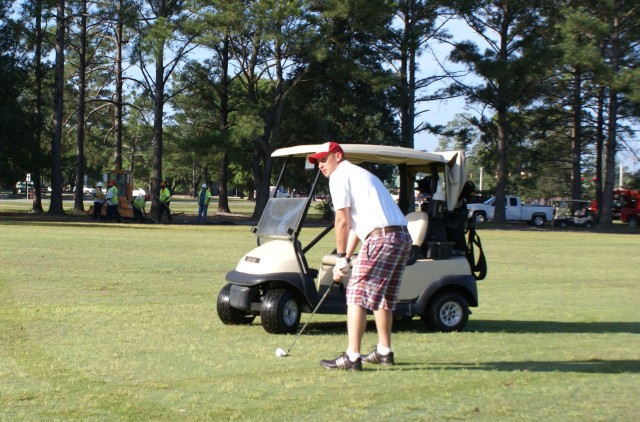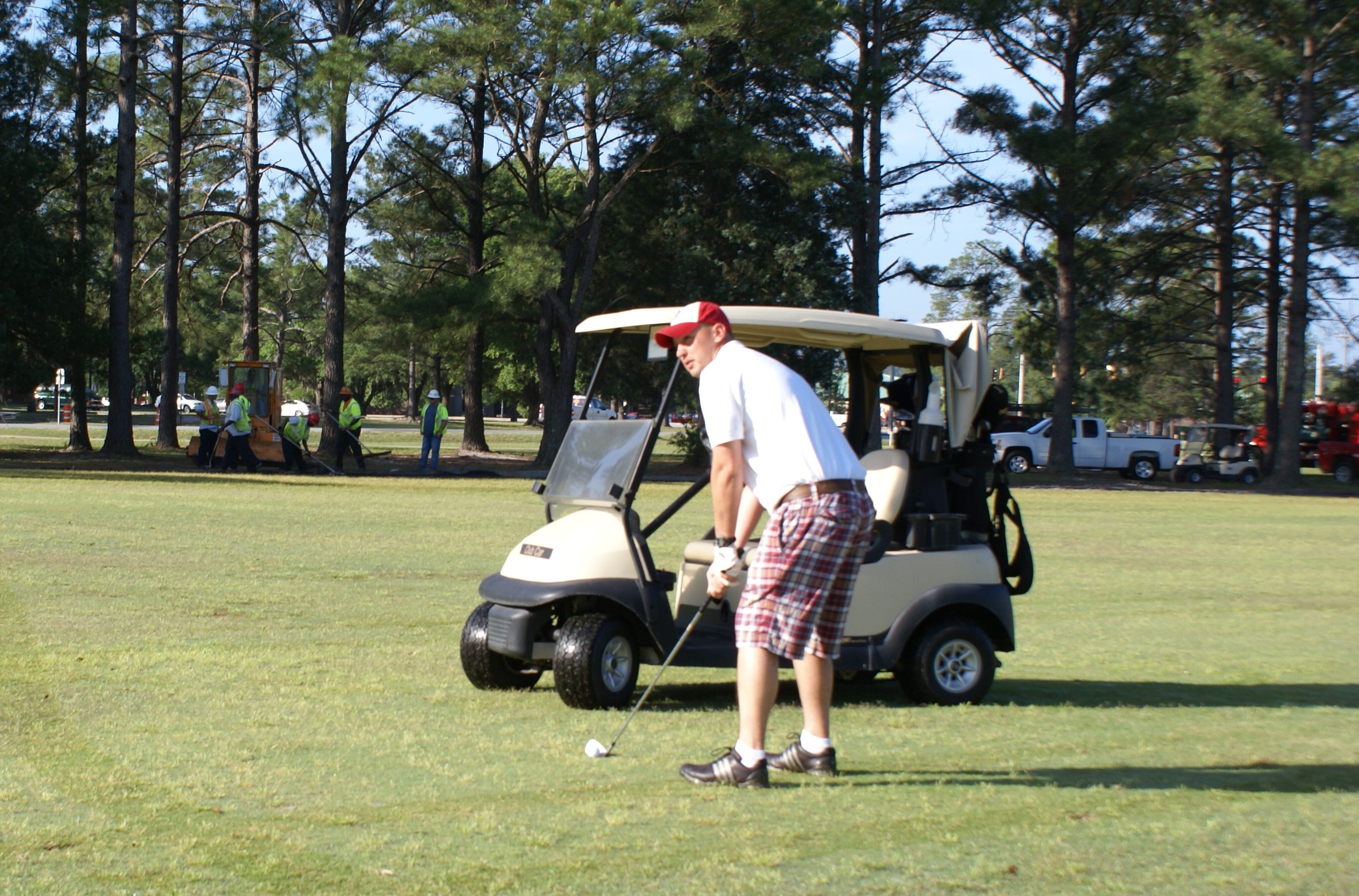Director of Golf for Taylors Creek, Hunter Golf Club thanks customers for their patience, contractors for working with staff
FORT STEWART, Ga. - A major renovation project at Taylors Creek Golf Course and Hunter Golf Club is in its final stages.
The work, costing a total of $739,000 for the two courses, began the first week of March at Taylors Creek and the third week of March at Hunter Golf Club.
Contractors removed and replaced three bridges at the Hunter course. At both courses, they improved drainage in trouble spots and repaired and resurfaced cart trails that had deteriorated from use or been damaged by root intrusion over the years.
Fort Stewart-Hunter Army Airfield Director of Golf, Tommie McArthur, had some special words for customers and the contractors as the work neared completion.
"I want to thank the contractors and the golfers, who were very patient so we could get this project done," he said. "The golfers understood, and they were very patient."
Both courses remained open during the renovation work.
P&E Construction Company of Bonaire, Ga, was general contractor. Reeves Construction Company East Division and R. B. Baker Construction were subcontractors.
"The golfers have been wonderful," said Cheryl Nakabayashi, project manager for P&E. "We worked around the golfers and they worked around us." She said the Hunter work required 6,950 square yards of asphalt and the Stewart project 6,760.
The repaired or resurfaced cart trails at Taylors Creek had been in place for more than 15 years, McArthur said, and had deteriorated badly over that time. On some areas of the cart trails, poor drainage had accelerated the deterioration.
At the Taylors Creek clubhouse, the cart staging area was paved. When striping is added, it will aid golfers in knowing where to return their carts after a round of golf.
"Before, our customers didn't have the visual direction and would just park on the grass," McArthur said.
The bridge at hole number 13 at Taylors Creek, which had badly deteriorated, was repaired.
Retired Air Force Chief Master Sgt. Russell R. Evans, who plays the Hunter course three to four times a week, said replacing the bridges on the sixth, thirteenth and fourteenth holes at Hunter was an essential safety step. "Those other bridges were washing out," he said.
As at Stewart, Hunter Golf Club cart trails damaged by root intrusion were repaired or replaced. McArthur said in some areas the root intrusion raised the asphalt to a point where the front ends of some carts were damaged.
Brant Kicklighter of the Engineering Branch of DPW worked on the project design for both courses. He said 9,338 linear feet of the cart trail at Hunter and 7,015 linear feet at Stewart were replaced or repaired. "That's about a third of the cart trails," he said, adding that some of the sections were severely damaged by root intrusion.
"We also repaired the practice tee area at Stewart, improving the access to it for the golfers," he said.
Evans said, "Everybody I've talked to, everyone I play golf with, they just go on about how good the course looks. It makes you want to play better, too. When you go to a golf course and you see nice golf carts and golf trails, you say, 'Man, this is nice,' and it puts you in a better frame of mind."
McArthur said, "The renovation of these cart trails and the repairs of these bridges is a major improvement. The whole goal is to try to be aesthetically pleasing and make our customers' rounds of golf more enjoyable, because we know that this golf course is for the Soldiers, their Families, retirees and the community."
He praised the contractors for working with him and his staff to keep the negative impact on play at a minimum.


Social Sharing